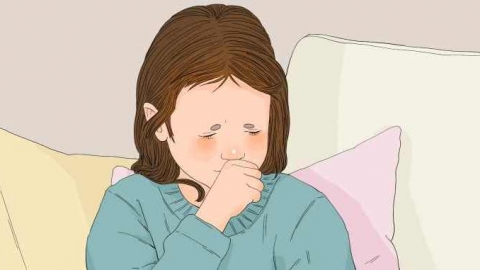What should I do if my child has a cold and fever?
Generally, common cold and fever in children may be caused by factors such as improper adjustment of clothing leading to chilling, temporary decrease in immunity making infections more likely, viral colds, bacterial colds, or acute tonsillitis. It is recommended to seek timely medical consultation to determine the exact cause, followed by improvement through general treatments, medication, and other methods under the guidance of a physician. Detailed explanations are as follows:

1. Improper adjustment of clothing causing chilling: Failure to adjust children's clothing timely according to weather changes may lead to a drop in body resistance after chilling, thus triggering a cold and fever. Adjust clothing promptly according to temperature changes, avoid overwrapping or wearing too little. During fever, reduce clothing appropriately to help dissipate heat and return to normal attire once body temperature stabilizes.
2. Temporary decrease in immunity leading to infection: Recent fatigue, lack of sleep, or an unbalanced diet in children can temporarily lower immunity, making them susceptible to pathogens that cause colds and fevers. Ensure children get sufficient sleep daily, maintain a balanced diet rich in vegetables and fruits containing vitamins, and engage in appropriate outdoor activities to strengthen immunity.
3. Viral cold: Caused by viruses such as influenza virus or rhinovirus, these pathogens stimulate the body to produce inflammatory responses, leading to cold and fever symptoms, accompanied by nasal congestion, runny nose, and other symptoms. When body temperature exceeds 38.5°C, medications such as paracetamol suspension drops, ibuprofen suspension, or Xiao'er Ganmao Ning Syrup may be taken according to medical advice.
4. Bacterial cold: A cold caused by bacterial infection, characterized by a more obvious inflammatory response, prolonged fever, and possibly yellowish purulent sputum or nasal discharge. Anti-infective medications such as amoxicillin-clavulanate potassium granules, cefixime granules, or Xiao'er Aminophenyl Granules may be used according to medical advice to relieve symptoms of cold and fever.
5. Acute tonsillitis: Inflammation of the tonsils caused by bacterial or viral infection, leading to cold-like symptoms and fever. The tonsils may appear significantly red and swollen, sometimes with purulent discharge. Medications such as cefaclor for oral suspension, Pudi Lan Xiao Yan Oral Liquid, or KAIHOUJIAN spray may be used according to medical advice.
In daily life, ensure indoor ventilation and avoid taking children to crowded enclosed places. During a cold, dietary intake should be light and easy to digest, such as millet porridge and vegetable porridge. Avoid spicy and greasy foods to help children recover health more quickly.




